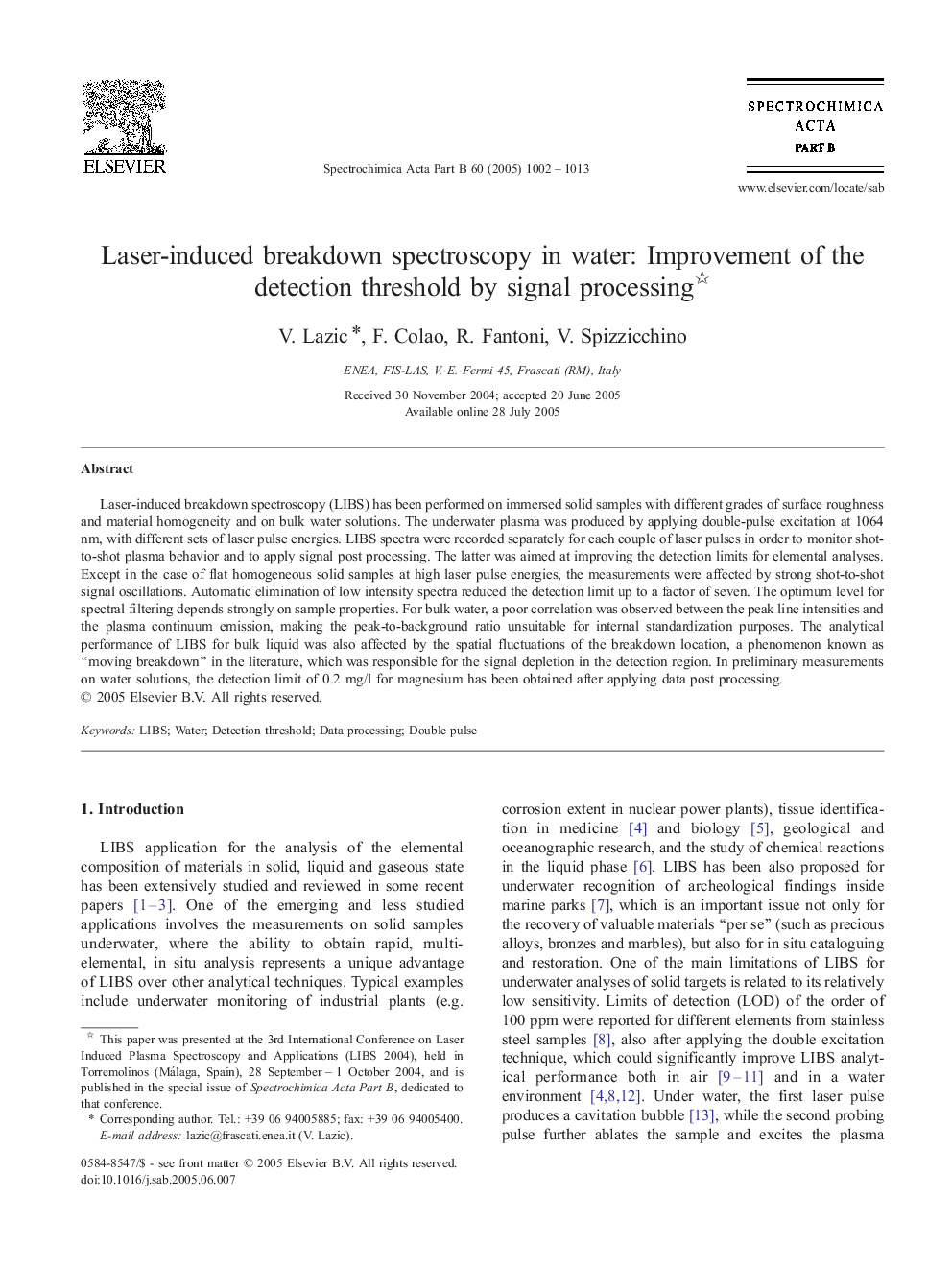| Article ID | Journal | Published Year | Pages | File Type |
|---|---|---|---|---|
| 9757240 | Spectrochimica Acta Part B: Atomic Spectroscopy | 2005 | 12 Pages |
Abstract
Laser-induced breakdown spectroscopy (LIBS) has been performed on immersed solid samples with different grades of surface roughness and material homogeneity and on bulk water solutions. The underwater plasma was produced by applying double-pulse excitation at 1064 nm, with different sets of laser pulse energies. LIBS spectra were recorded separately for each couple of laser pulses in order to monitor shot-to-shot plasma behavior and to apply signal post processing. The latter was aimed at improving the detection limits for elemental analyses. Except in the case of flat homogeneous solid samples at high laser pulse energies, the measurements were affected by strong shot-to-shot signal oscillations. Automatic elimination of low intensity spectra reduced the detection limit up to a factor of seven. The optimum level for spectral filtering depends strongly on sample properties. For bulk water, a poor correlation was observed between the peak line intensities and the plasma continuum emission, making the peak-to-background ratio unsuitable for internal standardization purposes. The analytical performance of LIBS for bulk liquid was also affected by the spatial fluctuations of the breakdown location, a phenomenon known as “moving breakdown” in the literature, which was responsible for the signal depletion in the detection region. In preliminary measurements on water solutions, the detection limit of 0.2 mg/l for magnesium has been obtained after applying data post processing.
Related Topics
Physical Sciences and Engineering
Chemistry
Analytical Chemistry
Authors
V. Lazic, F. Colao, R. Fantoni, V. Spizzicchino,
